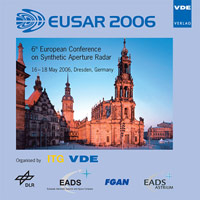SAR Techniques for the Imaging of Humans
Konferenz: EUSAR 2006 - 6th European Conference on Synthetic Aperture Radar
16.05.2006 - 18.05.2006 in Dresden, Germany
Tagungsband: EUSAR 2006
Seiten: 4Sprache: EnglischTyp: PDF
Persönliche VDE-Mitglieder erhalten auf diesen Artikel 10% Rabatt
Autoren:
Dallinger, Alexander; Bertl, Sebastian; Schelkshorn, Simon; Detlefsen, Jürgen (Lehrstuhl für Hochfrequenztechnik, Fachgebiet Hochfrequente Felder und Schaltungen, Technische Universität München, Germany)
Inhalt:
Due to the very need for better security monitoring, e. g. in airport environments a major task is to enhance the capabilities of today’s body scanners, which are mainly metal detectors, in order to find other potential hazards as well. In this context millimeter-wave systems are a promising approach, because the radiation does not present a health hazard to people under surveillance and readily passes through many optically opaque materials such as clothing fabrics. We propose to apply Synthetic Aperture Radar techniques. In the literature several fast and accurate algorithms exists for the very special geometry of a linear aperture, e. g. ω-k or chirp scaling algorithms. Linear apertures only can provide two dimensional information of the reconstruction area. A 3D image may be reconstructed by means of an interferometric approach. In our case we create a circular synthetic aperture by moving the imaging sensor circularly all around a person. Thereby we make sure that every part of the person can be seen by the sensor. Processing data from a circular aperture efficiently requires to reformulate the above mentioned reconstruction methods. We have modified an ω-k type algorithm to suit for circular apertures and cylindrical reconstruction areas. Analogies with respect to algorithms adapted for linear apertures are obvious. Circular apertures in general provide resolution in three dimensions but the resolution might be poor in at least one direction. To overcome this problem, i. e. imaging a three dimensional object with a two dimensional reconstruction method we use an interferometric configuration with two receiving sensors at close distance. Furthermore we adopt interferometric algorithms in order to get better and clearer three dimensional images with reduced ambiguities.


